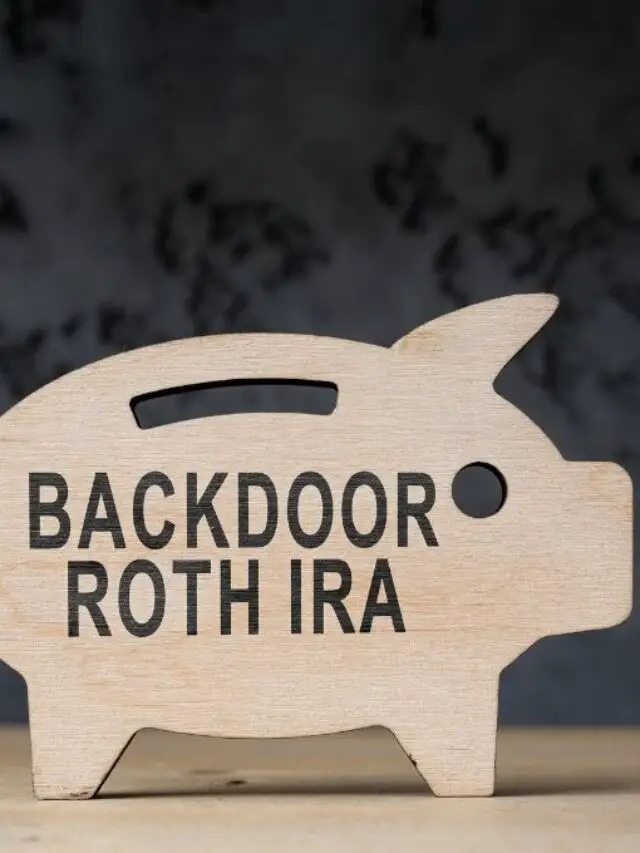The Federal Housing Administration, or FHA loans have burgeoned in significance over the past decade. As the real estate market exhibits a convoluted landscape, potential homeowners are seeking trustworthy options. FHA loans epitomize such a choice, often being the go-to for first-time homebuyers and those with less-than-perfect credit scores. In this comprehensive guide, you’ll glean indispensable insights about Federal Housing Administration loans—details that can help you take a savvy leap toward homeownership. The information will not only break down the complexities of these loans but also assist you in evaluating their fit for your financial circumstances.
Table of Contents
| ✍ Key Takeaways | |
|---|---|
| ⇝ | Federal Housing Administration loans extend their arm to a broader range of borrowers, even those with blemished credit histories. |
| ⇝ | Numerous types of Federal Housing Administration loans exist to suit different needs, from fixed-rate to adjustable-rate mortgages. |
| ⇝ | The Debt-to-Income (DTI) ratio and down payment requirements for FHA loans are more forgiving than conventional options. |
| ⇝ | FHA loans come with Mortgage Insurance Premiums (MIP), an extra cost that can affect your long-term budget. |
| ⇝ | Shopping around for mortgage rates can significantly alter the lifetime cost of the loan. |
What Exactly Constitutes an FHA Loan?
Initiated in 1934, FHA loans have evolved to become a cornerstone of the mortgage landscape in the United States. Unlike conventional loans, Federal Housing Administration loans are government-insured, thus giving lenders the safety net to accept lower down payments and moderate credit scores. The backing from the Federal Housing Administration signifies that the government will reimburse the lender should a borrower default.
However, this backing does not come gratis. Borrowers bear the cost through what is known as a Mortgage Insurance Premium (MIP). The MIP serves a dual role—providing security to the lender and facilitating more lenient lending norms for you, the borrower. Understanding this mechanism lays the foundation for decoding the labyrinth of Federal Housing Administration loans.
| ☀ Useful Tip ☀ |
| While FHA loans may seem advantageous due to lower down payments, always account for the MIP when calculating the total cost of your loan. |
Conventional Loans Versus FHA: A Comparative Analysis
While both conventional and FHA loans aim to facilitate home ownership, they take diverging paths in their offerings. Below, we illuminate these differences in a structured manner:
| Aspect | FHA Loans | Conventional Loans |
| Interest Rates | Typically lower | Usually higher |
| Credit Score | As low as 500 | Minimum 620 |
| Down Payment | Minimum 3.5% | Minimum 5% |
| Loan Limits | Subject to county limit | Generally higher |
| Mortgage Insurance | Required | Optional |
So, what do these contrasting features mean for you? If your credit score tends towards the lower end of the spectrum or you face limitations in making a hefty down payment, an Federal Housing Administration loan could be your ally. However, if you have a robust credit history and wish to dodge the extra burden of mortgage insurance, a conventional loan remains a viable choice.
| ☀ Useful Tip ☀ |
| If you possess a strong credit score, don’t rush into choosing an FHA loan simply for its lower down payment. The absence of mortgage insurance in conventional loans could make them a more cost-effective option in the long haul. |
Prerequisites for Securing an FHA Loan
Navigating the prerequisites of FHA loans involves more than merely checking boxes; it’s about understanding the intricate fabric that constitutes each requirement. Let’s get into the details.
Credit Score Requisites: More Than Just a Number
In the realm of FHA loans, credit scores act as a gateway, albeit a forgiving one. The minimum requirement rests at a 500 credit score. Yet, having a score between 500 and 579 necessitates a 10% down payment. Any score above 580 makes you eligible for the minimum 3.5% down payment. So while Federal Housing Administration loans seem inviting, they subtly urge borrowers to maintain a reasonable credit history for maximal benefits.
The Intricacies of Debt-to-Income Ratio
When it comes to the Debt-to-Income (DTI) ratio, FHA loans uphold a two-tier approach:
- Front-End Ratio: This represents your monthly income allocated for housing costs. The FHA generally prefers this to be below 31%.
- Back-End Ratio: This accounts for all monthly debt payments. Under FHA guidelines, this should not exceed 43% of your monthly income.
Down Payments: Options and Strategies
FHA loans stand out for their flexibility in down payment options. A minimum of 3.5% down is required if your credit score exceeds 580. Importantly, this down payment can be sourced from various avenues—savings, gifts from family, or even grants.
Acceptable Use of Gift Funds: What Qualifies?
Not all gifts are created equal, at least not in the eyes of the FHA. While you can use gift money for down payments, documentation is crucial. The donor must furnish paperwork to prove the gift’s legitimacy and that repayment isn’t expected.
FHA Appraisal: The Importance of Meeting Standards
Before securing the loan, an FHA-approved appraiser must assess the property you intend to purchase. The evaluation ensures the home meets minimum safety, security, and structural integrity standards.
Unpacking Mortgage Insurance Premiums (MIP)
As mentioned earlier, MIP is non-negotiable with Federal Housing Administration loans. This extra cost includes an upfront premium and a recurring annual fee, both calculated as percentages of the loan amount.
MIP Charges
| Type | Percentage |
| Upfront MIP | 1.75% |
| Annual MIP | 0.45% – 1.05% |
For example, if your loan amount stands at $200,000, the upfront MIP would be $3,500 (1.75% of $200,000). The annual MIP would range between $900 and $2,100, depending on your loan’s specifics.
An Assortment of FHA Loan Types
Not one-size-fits-all, Federal Housing Administration loans manifest in various forms to accommodate a gamut of needs and situations.
Fixed-Rate Mortgages
Fixed-rate FHA loans offer consistency. The interest rate remains static, making it easier for budget-oriented folks to plan their finances.
Adjustable-Rate Mortgages
For those willing to gamble a bit, adjustable-rate mortgages present an initial low interest rate. However, this rate can fluctuate, tethered to market conditions.
Hybrid Loans
A blend of the above two types, hybrid loans offer a fixed interest rate for a certain period before switching to an adjustable rate.
| ☀ Useful Tip ☀ |
| If you foresee a stable income stream and plan to live in the home for an extended period, a fixed-rate mortgage could be your safest bet. |
FHA Loan Limitations: Understanding the Bounds
Even though Federal Housing Administration loans offer a litany of benefits, they aren’t devoid of limitations. These boundaries manifest primarily in the form of loan limits, tethered to your residing county’s cost of living. For 2022, the limits range from $356,362 in low-cost areas to $822,375 in high-cost locales. These figures aren’t set in stone; adjustments occur annually in response to real estate market fluctuations.
The Application Voyage: Your Roadmap to FHA Loans
Securing an FHA loan isn’t an impromptu affair but a journey demanding meticulous planning. Here’s your roadmap:
- Credit History Review: Before embarking on the application process, scrutinize your credit report.
- Lender Comparison: Contrary to popular belief, different lenders offer distinct mortgage rates for Federal Housing Administration loans. Shop around.
- Pre-approval: Obtain pre-approval to gauge the loan amount you qualify for.
- Property Hunt: Now begins the search for a home within your loan limit.
- Offer and Acceptance: Once the offer gets accepted, forward the property details to the lender.
- FHA Appraisal: Arrange for an FHA-approved appraiser.
- Final Approval: Post appraisal, the lender will finalize the loan terms.
- Closing: This is the final phase, where you sign all requisite documents.
| ☀ Useful Tip ☀ |
| Always cross-verify your lender’s FHA approval status. The Department of Housing and Urban Development (HUD) maintains a database for this very purpose. |
Pros and Cons: A Balanced Perspective
As with any financial product, Federal Housing Administration loans come with their share of virtues and vices.
Pros
- Lower down payments and flexible credit requirements make Federal Housing Administration loans accessible.
- Options to roll home renovation costs into the loan amount exist.
- A chance to refinance into a conventional loan later to eliminate MIP.
Cons
- MIP can inflate the loan cost over time.
- Loan limits could constrict your property choices.
- A limited range of property types are eligible for Federal Housing Administration loans.
Wayfinding the Best FHA Mortgage Rates
No one wants to leave money on the table, and it’s especially true when dealing with substantial amounts like home loans. Here are strategies for securing the most favorable rates:
- Credit Score Improvement: Though FHA loans accommodate low scores, a better score could snag you a lower rate.
- Lender Comparison: Again, shopping around is key.
- Locking the Rate: Once you spot a favorable rate, lock it in. Rates are notorious for their volatility.
Conclusion
Acquiring a home stands as a monumental event in anyone’s life. FHA, or Federal Housing Administration loans, with their innate flexibility and inclusive approach, offer a viable pathway towards this goal. However, they aren’t a one-size-fits-all solution. Weighing their pros and cons in the context of your unique financial landscape is pivotal for making an informed decision.
Additional Resources
Call to Action
If Federal Housing Administration loans align with your homeownership goals, the next move involves initiating the application process. Equip yourself with the knowledge this guide offers and take that decisive step towards securing your dream abode.
Frequently Asked Questions (FAQs)
- Can I get an FHA loan with a bankruptcy history?
Yes, specific conditions apply. - Is there a maximum income limit for FHA loans?
No, Federal Housing Administration loans don’t have an income cap. - Can I use an FHA loan for investment properties?
Federal Housing Administration loans are generally for primary residences only. - What is the minimum property standard for an FHA loan?
The property must meet basic safety and livability standards. - Can I have more than one FHA loan?
Usually not, except in certain conditions. - How long do I have to pay MIP?
This varies based on loan amount and down payment. - Can non-U.S. citizens apply for an FHA loan?
Yes, if they meet specific eligibility criteria. - Do FHA loans require home inspections?
No, but they are strongly recommended. - Can I include my closing costs in the FHA loan?
Some closing costs can be rolled into the loan. - Is co-signing allowed for an FHA loan?
Yes, but the co-signer must meet specific requirements.
Prashant Chauhan
Author @ Finance RuffleMeet Prashant Pratap Chauhan, the savvy founder behind Finance Ruffle, a hub for sharp financial insights and expert analysis in the realm of finance blogging.




Pingback: Explore 2024’s 6 Best First-Time Home Buyer Loans And Programs: Your Quintessential Guide | Finance Ruffle
Pingback: Real Estate Investing For Beginners 101: Super 5 Strategies | Finance Ruffle
Pingback: 203k Loan: 5 Powerful Insights For Home Renovation Dreams | Finance Ruffle